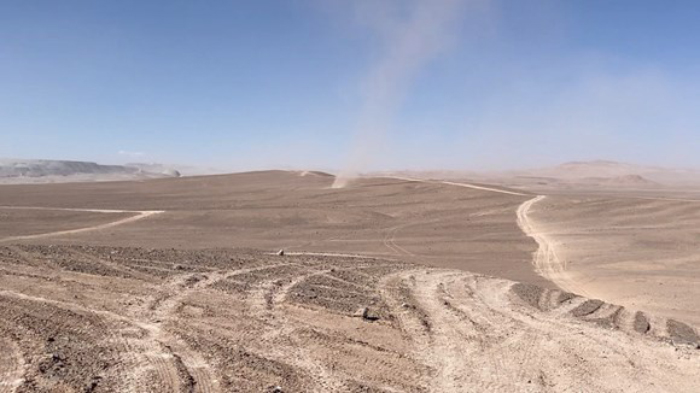As Extreme E heads to the Atacama Desert in Chile (24-25 September) for the Antofagasta Minerals Copper X Prix, the penultimate round of Season 2, we take a look at the challenging climate and environmental issues that this South American region faces.
The race itself will take place within the Atacama Desert, south of the Centinela mine, which is 700 miles north of capital, Santiago. This is the driest (non-polar) region in the world.
Extreme E’s decision to race in this part of Chile was instigated by the challenging climate issues that this region is facing, and also to shine a spotlight on the Copper industry, and its importance to electric vehicles.
Similar to many other places, the average annual temperatures here are expected to rise due to the effects of climate change – in particular the northern areas of the country which are expected to see a greater increase over the coming years. Despite variable levels of precipitation elsewhere, Chile’s Atacama Desert remains one of the driest regions on Earth.
But why is it so dry here?
Extreme E’s climate change scientist, Professor Carlos Duarte explains:“The Atacama Desert, extending over 1000 km between latitudes 19°S and 30°S, is virtually sterile. This vast area is blocked from moisture on both sides because it is bounded by two mountain chains, the Coastal Cordillera to the west and the Andean Cordillera to the east. This creates a major two-sided rain shadow that largely water travelling horizontally in the wind from either Pacific or the Atlantic Oceans. This renders it as the driest place on Earth, with an average annual rainfall of less than 2mm. In extensive areas of the Atacama, even the sturdiest plants cannot grow.”
The resulting lack of biodiversity can lead to a breakdown within a functioning ecosystem, namely: pollination, air purification, renewable material production, pest control and decomposition. A good example of this is the now almost extinct Loa frog, a species dependent on water and vital within the food chain as it is a natural pest controller.
In addition, and forming part of Extreme E’s focus in Chile, the race event is also focusing on the mining of copper. As electric vehicles rely heavily on copper not only for production but also for battery charging, Extreme E aims to highlight the development of sustainable alternatives. Chilean mining organisation and host partner, Antofagasta Minerals, is on a mission to develop mining for a better future and will use the event to showcase their innovative and inclusive methods which are positively transforming this crucial industry.
All of Antofagasta’s mining operations are situated in areas including the already dry Atacama Desert, making the sustainable management of water in the mining industry essential. The Group is a pioneer in the use of raw sea water and is now building a desalination plant at its Los Pelambres operation. It anticipates that raw or desalinated seawater and recycled water will account for 90% of the Group’s mining operations’ consumption by 2025.
Professor Carlos Duarte explains further: “Sustainable development involves multiple dimensions: economic, social, and environmental. However, the primary concern of the environmental sustainability of the mining industry is to avoid and reduce environmental impact at different stages of the mining life cycle, where the mining industry needs to anticipate possible negative effects that its operations may generate. Achieving sustainable mining requires strong leadership. Without improved sustainability, the growing demand for metals could lead to a steep increase in the impacts of mining on the environment.”
Additionally, and no less important, Extreme E supports and champions the extensive community projects that take place in the region thanks largely to work of Antofagasta Minerals. In line with its own gender equality pillar, the company has an above average (within the industry) female employment race of 17.8%. It has a Community Apprenticeships programme which has recruited many women into the business.
These Apprenticeship programmes aim to increase the number of STEM female students as well as women in more technical positions, such as mine equipment operators and maintenance workers.
Alongside, Antofagasta Minerals also runs multiple successful Community Projects. During 2019 through to 2021, over 30 of these projects were implemented in Sierra Gorda and Michilla – Including an emergency plan for the town, clean energy, dental surgeries, improvement of community infrastructure, water efficiency, photovoltaic (solar) initiatives for housing.

COMMENTS